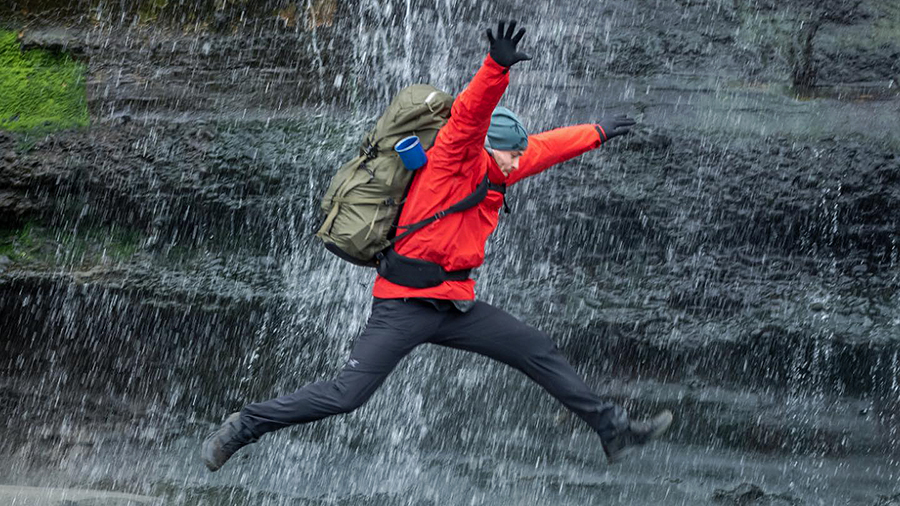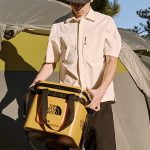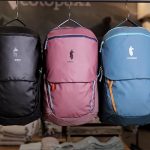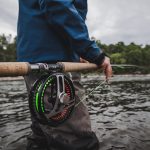Amer Sports, the parent of Salomon, Wilson, Arc’teryx, and other sports brands, filed confidentially for a U.S. initial public offering (IPO) that could value the group as high as $10 billion. The offering would come as Amer Sports’ business has seen accelerated growth, driven by Arc’teryx and Salomon and in China.
According to the report from Bloomberg News, the company plans to list by early next year. Amer Sports is seeking to raise more than $1 billion and seek as much as $3 billion depending on market conditions, sources told Bloomberg.
Amer Sports, headquartered in Finland and backed by China’s Anta Sports Products, Ltd., also owns Peak Performance, the Swedish outerwear and streetwear brand; Atomic, the Austrian ski brand; Armada, the U.S. ski brand; ENVE Composites, a manufacturer of carbon fiber bicycle rims and components; Louisville Slugger and DeMarini, both U.S.-based makers of baseball bats; Sports Tracker, a fitness tracking app; and Luxilon, a maker of strings for racquet sports.
The IPO speculation comes as Amer Sports hired Andrew Page, former CFO for Foot Locker, as group CFO and a member of its executive committee in April. Page reports to James Zheng, who replaced Heikki Takala as Amer Sports’ CEO in October 2020. Zheng had been executive director and president of Anta.
In December, Bloomberg first reported, (read SGB Media‘s coverage here) that Anta, headquartered in Jinjiang, was holding preliminary talks with investment banks for an IPO of Amer Sports that could raise about $1 billion or more.
In April 2019, an investor consortium comprised of Anta Sports, Anamered Investments, FountainVest Partners, and Tencent Holdings, Ltd. completed the acquisition of substantially all of the outstanding shares of Amer Sports, which had been trading on the Nasdaq Helsinki exchange, for €4.6 billion (U.S.$5.23 billion). Anamered Investments is owned by Canadian billionaire Chip Wilson, founder of Lululemon Athletica.
Anta is the majority shareholder with a 53 percent stake in Amer Sports.
The Amer Sports acquisition also included Precor, the fitness equipment brand sold in 2020 to Peloton Interactive for $420 million. The Suunto digital instrument business, formerly part of Amer Sports, was sold in 2020.
As part of the joint-ownership structure, Amer Sports remains a separate business entity, but Anta provides R&D and production resources to support expansion in the Chinese market. Amer Sports has its own Board of Directors.
Amer Sports’ “Big Brands, Big Channels, Big Countries” Growth Plan
After acquiring Amer Sports in 2019, Anta set an ambitious goal to grow its three biggest brands—Arc’teryx, Salomon and Wilson—to “billion euro brands” over the next five years under a “Big Brands, Big Channels, Big Countries” growth plan. The growth of the brands particularly emphasized footwear and apparel categories.
China was a major opportunity under Amer’s five-year growth plan as Anta, which primarily makes sneakers and activewear, aims to capitalize on the country’s growing middle class and expanding interest in sports. Amer was expected to tap into Anta’s extensive distribution infrastructure to fuel growth in China.
Another emphasis under Amer Sports’ “Big Brands, Big Channels, Big Countries” plan was expected to be DTC, both online and with physical stores. Arc’teryx has been aggressively expanding stores, reaching 28 locations in the U.S. and 24 in Canada.
Wilson also opened its first store in 2021, with the sports brand now having six, including two in its hometown of Chicago, three in New York City and one in Santa Monica, CA. The stores, in part, support the introduction of Wilson’s first lifestyle apparel offering.
Overall, Anta set a goal in 2019 for Amer Sports to achieve revenue growth at a CAGR of 10 percent to 15 percent under the five-year plan, with profit growth ahead of sales growth.
Amer Sports saw a sales decline in 2020 due to restrictions caused by the pandemic and impacted by pandemic-driven supply chain disruptions over the last few years. However, Anta’s financial reports show that by 2021, revenue and operating profit from the continuing operations of Amer Sports’ core brand business exceeded pre-pandemic levels in 2019 and hit a record high.
Amer Sports had continued robust growth in 2022 and the first six months of 2023.
In its report for the six months of 2023, Anta indicated that Amer Sports would complete its five-year plan. Anta said in the report, “In 2023, Amer Sports is on track to complete the “Big Brands, Big Channels, Big Countries” development plan set five years ago and is in the process of shaping its next phase of growth strategy and objectives. In the second half of this year, Amer is expected to maintain healthy operational growth and is poised to further expand the global presence of its brand portfolio, building upon the robust foundation established in the initial five years following the acquisition. Following its purpose statement, Amer will elevate the world through sport, from courts to slopes, from cities to mountains, and everywhere in between; it inspires people to explore and experience the joy of sports and lead better, healthier lives.”
Amer Sports’ Sales Climb 37 Percent In 2023 Half
In the first six months of 2023, Amer Sports’ sales jumped 37.2 percent to RMB13.27 billion ($1.8 bn) a year ago. EBITDA vaulted 149.2 percent to RMB1.78 billion ($243 mm) from RMB710 million a year prior. Anta said Amer Sports’ improvement reflected “the healthy development and the enhancement in profitability at the operation level of the joint venture under the strategic growth plan set by the investor consortium.”
Anta noted that its share of loss from Amer Sports’ joint venture, AS Holding, amounted to RMB516 million ($71 million) due to non-recurring items. The extraordinary items include a “significant rise in the discount rate used in impairment testing and adjustment in development priority of the brands under Amer Sports” and an impairment charge for the Peak Performance business.
Excluding these non-recurring items, the Amer Sports’ joint venture “managed to achieve breakeven results with operating profit adequately covering both interest expenses and purchase price allocation impact, making it the best-performing first half since the acquisition by the investor consortium,” Anta wrote in its report.
In 2022, Amer Sports’ sales grew 21.8 percent to RMB24.03 billion ($3.3 billion), a record high since the acquisition. EBITDA increased 8.8 percent to RMB2.58 billion ($353 mm).
Amer Sports Scores Debt Rating Upgrades
Amer Sports’ improving performance was also recognized by several upgrades of the company’s outstanding public debt by Moody’s Investor Service and S&P Global Ratings.
In June, S&P upgraded (read SGB Media‘s coverage here) the debt ratings of Amer Sports due to the company’s improving operating performance, thanks to a strong performance in China, the continuous acceleration of the Arc’teryx brand, and positive momentum in its footwear division, driven by the Salomon brand.
S&P revised its forecast upward and expects topline growth of about 10 percent to 15 percent on average over the next two years, driven by favorable consumer demand for sportswear and the group’s continued penetration in China. China grew to represent about 20 percent of Amer Sports’ sales in the first quarter.
S&P wrote, “In our view, consumers’ increasing appetite for outdoor activities, with China being one of the fastest-growing markets worldwide due to its increasing population of runners, will continue to support demand. Furthermore, we see support for Amer Sports’ revenue growth from the continuous expansion of its retail segment (15 percent of FY2022 sales) and e-commerce segment (14 percent), and its continuous investments in key brands, especially Arc’teryx and Salomon.”
S&P expects Amer Sports to show topline growth of 17 percent to 18 percent in 2023 and 8 percent to 9 percent in 2024. Alongside a continuous improvement in profitability, S&P said this would drive adjusted debt to EBITDA to around 6.0x over the same period, down from an adjusted leverage at 7.2x for FY22.
In upgrading Amer Sports’ debt in March, Moody’s likewise cited (read SGB Media‘s coverage here) Amer Sports’ particular strength in China that helped drive 22 percent currency-neutral growth in 2022. Moody’s wrote in its report, “Amer Sports’ earnings continued to grow at a sustained pace in 2022, as retail expansion, favorable product mix and price increase more than offset the negative impact from higher input and freight costs, supply chain disruptions and the lockdowns in China.”
Moody’s noted that the gains in 2022 came despite “weakening consumer sentiment” across Europe and the U.S. in the second half of the year. Moody’s stated, “All regions achieved double-digit growth rates, with a key contribution from China, where sales rebounded strongly after the lockdowns.”
Moody’s noted that while inflation, logistics disruptions and higher expenses to fuel DTC expansion impacted further improvement in profit margins, the increase in earnings led to a notable reduction in the company’s Moody’s adjusted gross debt to EBITDA ratio to approximately 6x at the close of 2022. That compares to 7.2x at the close of 2021, with the improvement exceeding Moody’s expectations.
Moody’s noted that Amer Sports’ free cash flow at year-end remained negative by around €300 million, lower than Moody’s expectations, primarily due to elevated inventories tied to supply chain disruptions during the end of 2021 and in 2022. The negative free cash flow generation also reflected the company’s investments in retail expansion, mainly in China and the U.S.
Moody’s concluded that while inflation, sluggish consumer sentiment and uncertain macroeconomic environment are key downsides to Amer Sports’ growth potential over 2023, the company is expected to further reduce its adjusted financial leverage to below 5.5x by 2024. Moody’s wrote, “This reflects the expectation that Amer Sports’ strong portfolio of globally recognized brands—some of which with premium pricing such as Arc’teryx—together with its good geographical and wide product diversification, will mitigate the risk of earnings volatility even in a recessionary environment.”
Photo courtesy Arc’teryx
















